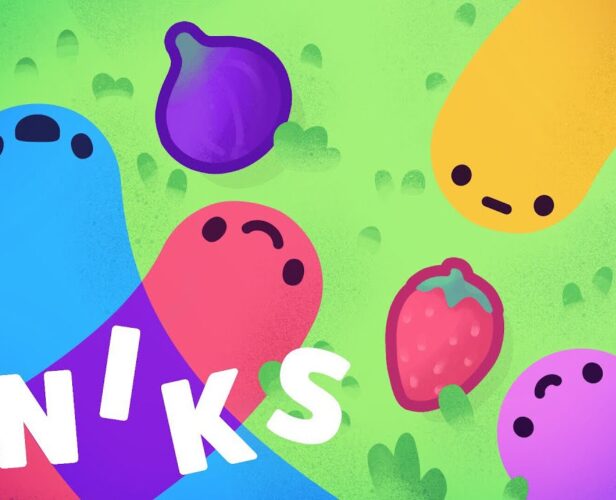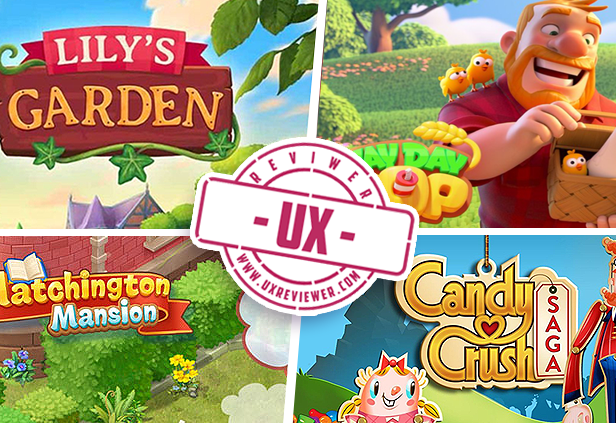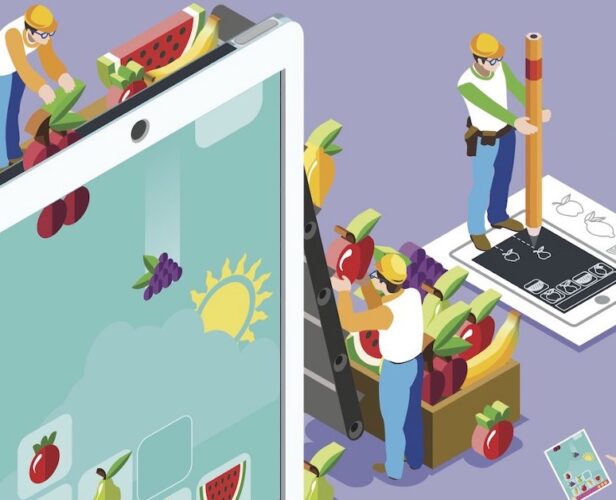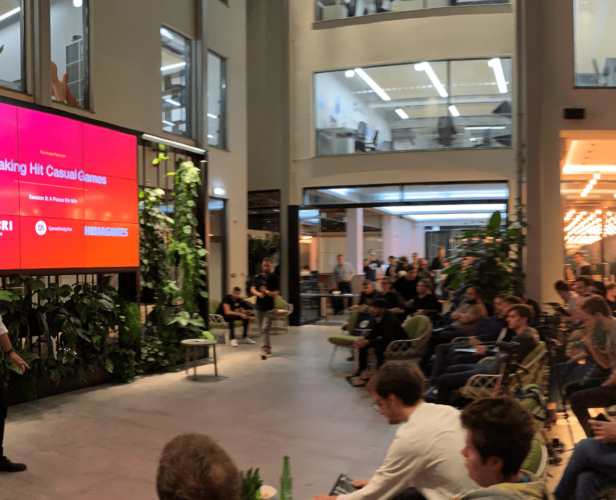Category
Game Design
#Game Design
Making a puzzle game? Avoid these 5 common mistakes
The puzzle game genre is arguably one of the most popular genres on the market, and has been around since the first smartphone was created (remember Cut the Rope?). There are hundreds, if not thousands of puzzle-like games on the app stores, all of which offer their own unique take on the genre. We’ve previously released articles on mistakes to avoid when you are creating a F2P game, but this time I want to focus my attention to puzzle. What makes a good puzzle? How can you make your game stand out? And most importantly, what mistakes should you avoid when working on yours? Here’s what I found… 1. Avoid breaking natural progression Progression tactics are a great way to get your player up to speed without overwhelming them. (Afterall, you wouldn’t start a newbie on a grandmaster level of...
#Game Design
4 Key Steps to Making a Successful Hyper-Casual game
Hyper-casual games became the hottest trend in the industry when developer Voodoo saw an exponential increase in downloads, which made them the third best performing game developer worldwide in 2017. Only Google and Facebook performed better, and the message was made clear: hyper-casual games are in-demand and can be extremely successful. Since having sustained this popularity, hyper-casual games now generate between $2 billion and $2.5 billion in annual revenue. People across the globe are now spending more time than ever playing games, and perhaps more significantly, they’re also engaging with advertising more – a trend that has played to the strengths of hyper-casual’s unique monetization model. The first quarter of 2020 saw hypergrowth in the hyper-casual vertical, with global installs doubling from December 2019 to March 2020. Users weren’t only downloading more hyper-casual games, they were also playing them more...
#Game Design
How to Crack the Match 3 Code? – Part 1
Editor’s Note: This article was originally published by Om Tandon, Founder/Games Consultant at UX Reviewer.com. You can find the original version of this post here. Since the early days of app store gaming, Match 3 games have been consistently one of the most popular top-grossing casual games category (Candy Crush Saga launched in 2012 being a classic example genre’s long reign). Reasons for this genre’s mass popularity with players have traditionally included: Simplified core loop with low barrier to entry for new players and first-time gamers Game mechanics leveraging mobile-first, intuitive touch gestures on smart devices like tap, swipe which even children can figure out (literally) Relatively less player effort & user friction via low strategy puzzle core loop. Short gameplay sessions with low time commitment making these games effortlessly easy to pick and drop on the go. You can successfully play a session in a...
#Game Design
So you want to make an RPG game? Here’s what you should know
The RPG genre has changed dramatically over the past few years. Going from pen and paper to tabletops, from desktop to mobile, the genre barely looks the same as it did all those years ago. Despite this, there are a few elements that hold true in them all. And in this post, my goal is to highlight what those elements are, how they work, and what you need to remember when making a hit RPG game. There are four main sections you can check out, so feel free to skip to something in specific: Audience Get your pacing right Smaller experiences Customization Let’s get started. So, who the hell plays RPG games? As you’ll probably know, audiences don’t just slip into one neat demographic. There are a ton of reasons why someone would play your game. If you look at...
#Game Design
How Voodoo Diversified and Lowered Game Product KPIs
Editors Notes: This article was originally published on LinkedIn by Youssef Gasmi, Communications Manager at Voodoo. Measurability of value has become a key factor in game publishing, a set of metrics that define what games get made, and which concepts are invested in. Successfully understanding the core strengths and the impact a game will have before it is released is a vital part of the development process in mobile games. This is becoming more important due to the highly competitive nature of the market in 2020. As result, what were once seen as hard and fast rules, namely 55% D1, 22% D7 retention and CPIs below $0.25 are now considered short-sighted. At Voodoo, we have become the leading publisher behind Hyper-Casual games, and we have used a robust testing methodology to establish a game’s retention, and cost per install values,...
#Game Design
5 Things to Consider When Designing Hyper-Casual Games
Editors note: This blog was written by hyper-casual specialists, JoyPac, and is based on their recent webinar: Design Strategies for Hyper-Casual Game Development. JoyPac specializes in publishing hit hyper-casual games across the globe, and today they have agreed to share their top tips and strategies. To develop a successful hyper-casual game at hyper-fast speed, you need to have a clear production process that focuses on game design. A lot of developers jump into creating hyper-casual games without proper planning and without proper testing. This often leaves them with little idea of how much appeal their game will have, and with a lot of hard work going to waste. We (JoyPac) recently hosted a webinar on this exact subject, along with Umami Games and SuperPlus Games. Based on that webinar, we’ve put together five major things to consider before you set...
#Game Design
A Beginner’s Dilemma: To Start With Casual Games or Mid-Core Games?
Editor’s Note: This post was originally published on LevelUp by Joakim Achrén, the Founder and CEO of Elite Game Developers, a Helsinki-based company that helps gaming entrepreneurs in starting their first games company. One of the earliest and most important decisions founders face when starting a games company is the level of complexity of their first game: should it be casual or mid-core? As an angel investor, every week I get to take a look at pitches from founders and I see them struggling with the same problems over and over again. So, how does one decide where to start and which approach will bring the most successful long-term? Here’s what I’ve learned through my experiences creating a games company and going through countless pitches since. The economics of mobile game ventures After hearing the pitch for a game, I...
#Game Design
Four Benefits of Hyper-Casual Games for the Gaming Industry
Editor’s Note: This post was originally published on LevelUp by Joakim Achrén, the Founder and CEO of Elite Game Developers (a Helsinki-based company that helps gaming entrepreneurs in starting their first games company). You can find the original version of the post here. No, this is not an article about how the hyper-casual market has peaked. This isn’t an article about how poorly hyper-casual games generate value for advertisers who buy ad inventory. And this isn’t an article about how crowded the market of hyper-casual games already is and how big studios are cloning and fast-following all the successful hyper-casual incarnations. No, this is an article about why hyper-casual has positively impacted the gaming industry and why its approach to development should be emulated by other genres. 1. Fast shipping speeds up the learning curve This past fall, I’ve been...
#Game Design
Purple Jam Interview: Lessons from making an Audio-only Game
Ahead of the release of their newest title, Pitch Black, I spoke to the developers at Purple Jam to learn how they’ve gone about creating an audio-only game, and what they have learned along the way. Thanks for joining me today. Before we get started, would you be able to give us a bit of background on your team? Sure thing. So, Purple Jam consists of three audio specialists turned game developers. We first met each other last September when we were powering through our Masters’ at the University of Derby. But it wasn’t until we reassessed our lives did we decide to join forces and create the game of all games – Pitch Black: A Dusklight Story. In a flash of inspiration, Harry Cooper (commonly known as ‘The Mastermind’), had the idea of creating a binaural based audio game....
#Game Design
Five Mistakes to Avoid When Making A F2P Game
Back at PGC Helsinki 2019 in October, we had the pleasure of seeing quite a few interesting talks. But among all the sessions we attended, there was one that particularly stood out – where Priyank Badkul from Huuuge Games shared the five key mistakes mobile game developers should avoid after deciding to pursue their F2P game idea. Priyank is a Product Owner of Coffee Break Games at Huuuge Games – a division that focuses on Classic Games such as Chess, Checkers, Dominoes and many more. He has been making games for the last 14 years. He produced the first official Formula One mobile game and Bingo Bash – the all-time highest-grossing bingo game. If you weren’t there in Helsinki for the conference, here’s Priyank to bring you up to speed: I’ve worked on some very successful mobile games. But I’ve...
#Game Design
Making a Hit Idle Game – Eight Lessons from Kolibri Games
In October, we held our second Making Hit Casual Games event, focusing on idle games (aka ‘clicker’ games). We wanted to know what made Kolibri Games’ Idle Miner Tycoon so successful. So we invited Kolibri’s Director of Business Development, Nate Barker, to tell our audience what lessons they learned from making their debut hit – and how they put them to use in developing their next big game, Idle Factory Tycoon. If you couldn’t be there in person, here’s Nate to fill you in on all the idle games wisdom you missed: So what is an idle game? There are lots of different ways to answer this question. But here’s our answer: An idle game is a spreadsheet with an interface. It’s not a very fun-sounding description, but it’s accurate. The mathematics behind idle games are mostly similar. You start...
#Game Design
Bam, Splat, Kapow: How to use Sound Effects to bring your Mobile Game to Life
It goes without saying that to make your mobile game successful you’ve got to have great visuals. They don’t necessarily need to be super sophisticated or complicated – but they’ve got to look good. So once you’ve sorted out your gorgeous gameplay, you might be tempted to sit back and relax. But there’s something else you shouldn’t forget – the sound. We’ve already talked about the importance of getting music right (and how to use it as a core mechanic). So in this post, we turn our attention to sound effects, and how simply adding these can make a real difference to gameplay. Are sound effects really that important? Yes. Sound effects are crucial for adding atmosphere and building emotion. If your player is walking through a scary, damp cave, for example, some dripping water sounds or distant footsteps can...
#Game Design
Making Hit Idle Games Event – Homa Games, Kolibri & GameAnalytics
It’s been a couple of months since our first event back in June, but the Arcade R(E)volution is back, and this time we focused on the idle genre. Accompanied by publishing giants, Homa Games, and Idle experts, Kolibri, we presented an evening full of insights, stats, stories, advice, and lessons. All on how to create hit idle games. If you made it that evening, brilliant! Thanks so much for coming. And if you sadly missed it, no worries. We recorded the entire evening, saved the decks, and put together some key takeaways. So you can get the low-down on what’s happening in the idle world, all of which you can find below. But before you dig in, we just wanted to share some information with you about the Arcade R(E)volution, and when you can expect to find the next one…...












